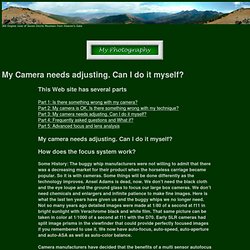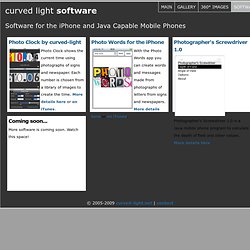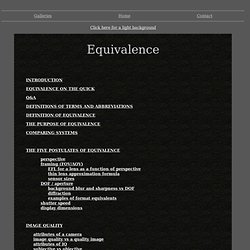

Ebook – Mercredi Pratique. Forums. D300 does 8fps without vertical grip [Page 1]: Nikon D300 - D100 Forum. Confirmed, it works!
![D300 does 8fps without vertical grip [Page 1]: Nikon D300 - D100 Forum](http://cdn.pearltrees.com/s/pic/th/without-vertical-photography-14056420)
Wow, the sound of 8fps is something else! They're only needed if you want to shoot with the same exposure for each shot. The 8fps hack doesn't require them. Here is my full list of settings required for the hack. Everything else is optional depending on what you want to achieve. S drive mode (not CH mode!) The last point can be achieved by several means: AF-S modeManual focus lensAF-C with AF-ON only (setting A5 to OFF), without pressing the AF-ON button (This is the mode I use all the time anyway -- try it if you haven't already.) Optional settings: M mode with E5 to Flash Only. Actually, it does seem to work with AF-C and AF-ON, but it totally stalls if it has to refocus. This leads to my theory that with the EN-EL3 battery, the underlying D300 hardware can EITHER: Shoot at 8fpsAutofocus continuously But not both.
So this hack does not completely uncripple the camera. New Nikon D300? - START HERE! [Page 1]: Nikon D300 - D100 Forum. I thought I'd start this thread since I just bought a new D300 and I've read a lot about the camera recently.
![New Nikon D300? - START HERE! [Page 1]: Nikon D300 - D100 Forum](http://cdn.pearltrees.com/s/pic/th/digital-photography-review-14056345)
I see a lot of people with questions asking for help and I thought I would compile some useful links in this thread for beginners as well as other folks Hopefully, with the help of the kind folks here, we can make this a very informative thread. First, there's the owners manual, which you can download here for easy reading on your PC/Mac Here's a thread from Nikonians with a very helpful spreadsheet about all of the settings. Here's a discussion at NikonCafe with some very useful tips & tricks for settings and such.
Here are a few excerpts from Elite's D300 made easy DVD Active D-Lighting Live View Demo Tips Here are some links to a few articles and threads that are helpful. Other helpful websites Nikon Digitutor Luminous Landscape NikonCafe Thom hogan Bjorn Rorslett Rob Galbraith Stay positive and shoot for the stars!
Lumière. DIY Photo Studio. My Photography. This Web site has several parts Part 1: Is there something wrong with my camera?

Part 2: My camera is OK. Is there something wrong with my technique? Part 3: My camera needs adjusting. Can I do it myself? My camera needs adjusting. How does the focus system work? Some History: The buggy whip manufacturers were not willing to admit that there was a decreasing market for their product when the horseless carriage became popular. Camera manufacturers have decided that the benefits of a multi sensor autofocus system with active LCD indicators cannot be combined with prisms whose surface is not flat with the plane of focus. Focus devices have been modularized to the point that manufactures may use a particular module for several years in more than one camera.
Focus sensors like high contrast and lots of sharp edges better than flat, smooth surfaces. How the mirrors influence focus Pictured below is a drawing showing the light paths uses in manual and auto focus. . Go see Tim, but come back. Product photography - how to improve your product photos. Photography, 360° images and software. Photo Clock by curved-light Photo Clock shows the current time using photographs of signs and newspaper.

Each number is chosen from a library of images to create the time. More details here or on iTunes. Photo Words for the iPhone With the Photo Words app you can create words and messages made from photographs of letters from signs and newspapers. Photographer's Screwdriver 1.0 Photographer’s Screwdriver 1.0 is a Java mobile phone program to calculate the depth of field and other values. Coming soon... Double/Multiple Exposure Photography: Tips, Tutorials, and Examples. Equivalence. Let's begin by considering a couple of experiments you can do at home.

Take a photo of a scene at, say, 35mm f/5.6 1/200 ISO 3200 and 70mm f/5.6 1/200 ISO 3200. Crop the 35mm photo to the same framing as the 70mm photo, and display both photos at the same size. These photos have the same exposure, and are taken on a camera using the same sensor, thus the same efficiency and pixel size. Which photo is more noisy and why? Here's another experiment. Answers are at the end of this section. Noise. When people refer to noise in an image, what they mean is the density of the noise in an image (NSR -- noise-to-signal ratio) and is often represented as a percent. There are two principle sources of noise in a photo: luminance noise and chroma (color) noise. The chroma noise is the noise is a result of the CFA (Color Filter Array) both blocking light which they are supposed to admit (AE -- Absorption Error), and admitting light they are supposed to block (TE -- Transmission Error). Cours photo de G. Desroches - Tutoriels, fiches techniques, conseils pratiques.